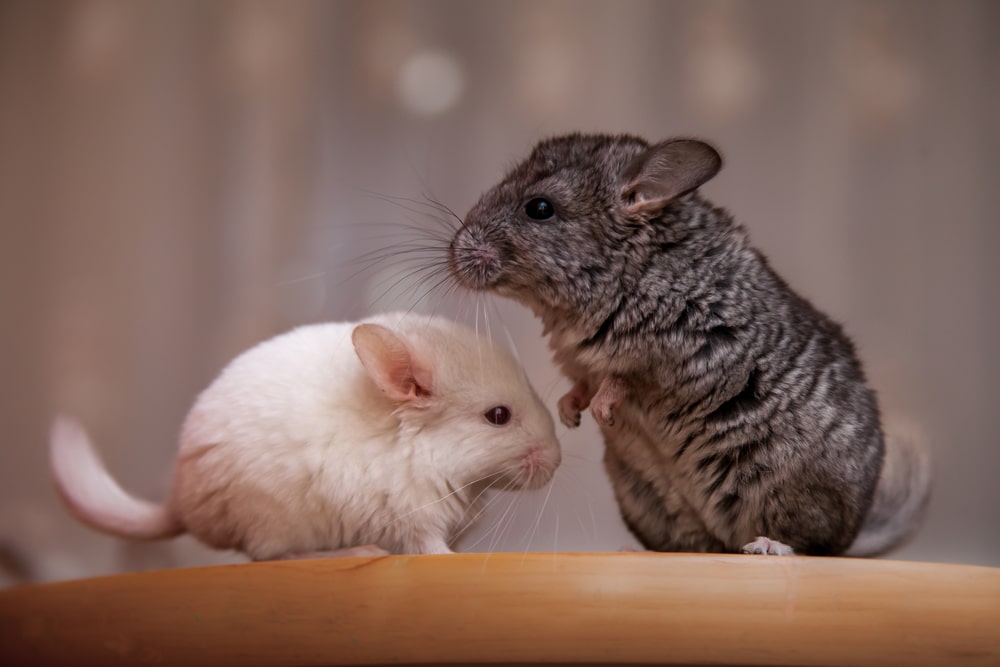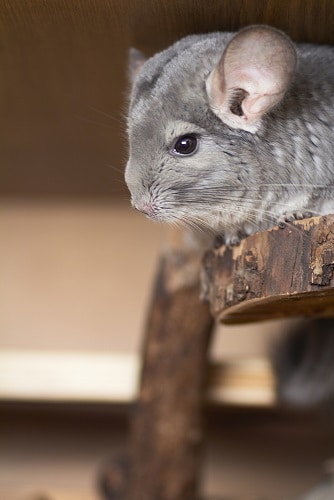
Planning to adopt one of the cutest and softest rodents on the planet as a pet? Congratulations on a great choice; we can see why Chinchillas, in particular, has won your heart.
Few things make you instantly want to cuddle them as Chinchillas do, but mind you, they’re quite naughty creatures.
However, since you’ve decided to adopt one, you’re indeed debating whether to bring in a male or a female chinchilla. The good news is that there’s hardly any personality difference between the two genders.
For the most part, both males vs. female chinchillas make wonderful pets. The only difference is in their reproduction process and how you care for the pet based on gender.
If you’re here to learn as much as possible about male vs. female chinchillas, keep reading below for some vital information.
Male Vs Female Chinchilla
Is There A Better Choice Between The Two?
Not really, and if you can accommodate only one chinchilla into your home as a pet, you can pick any gender. Gender-wise, the two don’t differ significantly and are both quite suitable for life as home pets.
The male and female chinchillas connect very strongly with people and form an equal attachment to their pet parents. Both genders love being petted behind their ears or under their chin.
Din terms of disposition, you won’t be able to split the personalities of male and female chinchillas. The only notable difference is in taking care of and here, most will find female chinchilla pets somewhat easier than their male counterparts.
Disposition
The personality of a chinchilla does not depend on their gender but strictly on an individual basis. That said, though, females tend to be more active and high-strung unless you put them in groups.
Male chinchillas are calmer and somewhat less energetic unless you group them.
Just as is characteristic of females, when you group female chinchillas, you’ll find them much milder and pairing sophisticatedly with other chinchilla ladies.
Male Vs. Female – Characteristics
Chinchillas are, by nature, social creatures, and they enjoy living with their fellow company. But as we said, the personalities of chinchillas vary strictly by individual type rather than gender.
If you wish to keep more than one chinchilla as a pet, you will have to place them together, carefully choosing the gender strategically.
As we mentioned, the females are fiercer creatures, while the male chinchillas are somewhat somber. But when you place the genders together in a cage, they can act aggressively toward one another.
History has proven that placing mature females with younger males has often aggravated them to the extent that the older female chinchillas killed the younger males.
This is especially true when the female chinchillas are in heat. They become onerous to the extent of displaying downright territorial and hostile aggression.
In times of aggression, when you try to separate the chinchillas, you’ll only increase the risks of injury and even death.
But only male chinchillas together are less territorial, calmer, and in fact, more cordial with others. Female chinchillas are rarely aggressive toward other female companions; they direct most of their aggression toward males.
Hence, when grouping them, we recommend placing a male chinchilla with another male in the cage or a female chinchilla with another female. However, there are rare cases where fixed opposite chinchilla genders can coexist.
This is generally the case of siblings or littermates who have been together since birth and are so comfortable that they never put up fights.
But if God forbid you have rowdy and violent chinchillas, we recommend putting them in separate enclosures to prevent bloodshed.
Another good practice for pet owners is to get an enclosure for their chinchilla pets as large as their space allows. This will encourage cohabitation without triggering aggression and territorial fights in the rodents.
Breeding Pattern
Female chinchillas typically mature when they are around four or five months old. But chinchilla experts suggest not breeding them till they’re at least eight months or a year old.
Pregnancy for any species is a complex process, and you have to ensure your pet chinchilla is grown enough to complete a healthy pregnancy journey.
We recommend waiting until your female chinchilla pet is at least two years old before you breed her. As for the chinchilla’s gestation period, note that it lasts for 111 days.
Differentiating The Genders
Another distinctive difference between male and female chinchillas is their anatomy. The two different genders may not have significantly different mannerisms, but they don’t at least look the same.
To determine whether you have a male or a female chinchilla on hand, look closely at their anatomy.
A male chinchilla will have gaps in the middle of its anal area and genitalia. Moreover, a female chinchilla will be larger than a male, but you cannot count on this as a reliable way of telling the gender apart.
If you have trouble identifying a male vs. female chinchilla, you could always ask a vet to determine the sex for you.
Comparison Table
| Female Chinchilla | Male Chinchilla | |
| Average length-adult | 9 to 11 inches | Usually, 9 to 11 inches but may appear smaller than females |
| Average weight-adult | Can weigh around 14 to 24 pounds | Can weigh around 14 to 24 pounds |
| Sexual maturity | Matures at four to five months of age | Matures at four to five months of age |
| Activity Level | Very high-strung and energetic | High but comparatively calmer than females |
| Disposition | Sociable and highly active | Territorial, friendly, and fairly active |
| Companionable? | Sometimes and typically with other females | Sometimes and generally with a male companion |
| Lifespan | Can live up to ten to twenty years | Can live for ten to twenty years |
Final Thoughts
When considering chinchillas to adopt as pets, you may wonder which gender might be more suitable. The fact is that male vs. female chinchillas do not exhibit much difference in their dispositions and personalities.
The only way to tell apart their genders is by inspecting their anatomy. Apart from that, female chinchillas are the better picks for novice pet parents, according to chinchilla experts.
This is mainly because the females tend to be more agreeable and cordial when placed in groups or paired with other female chinchilla companions.

